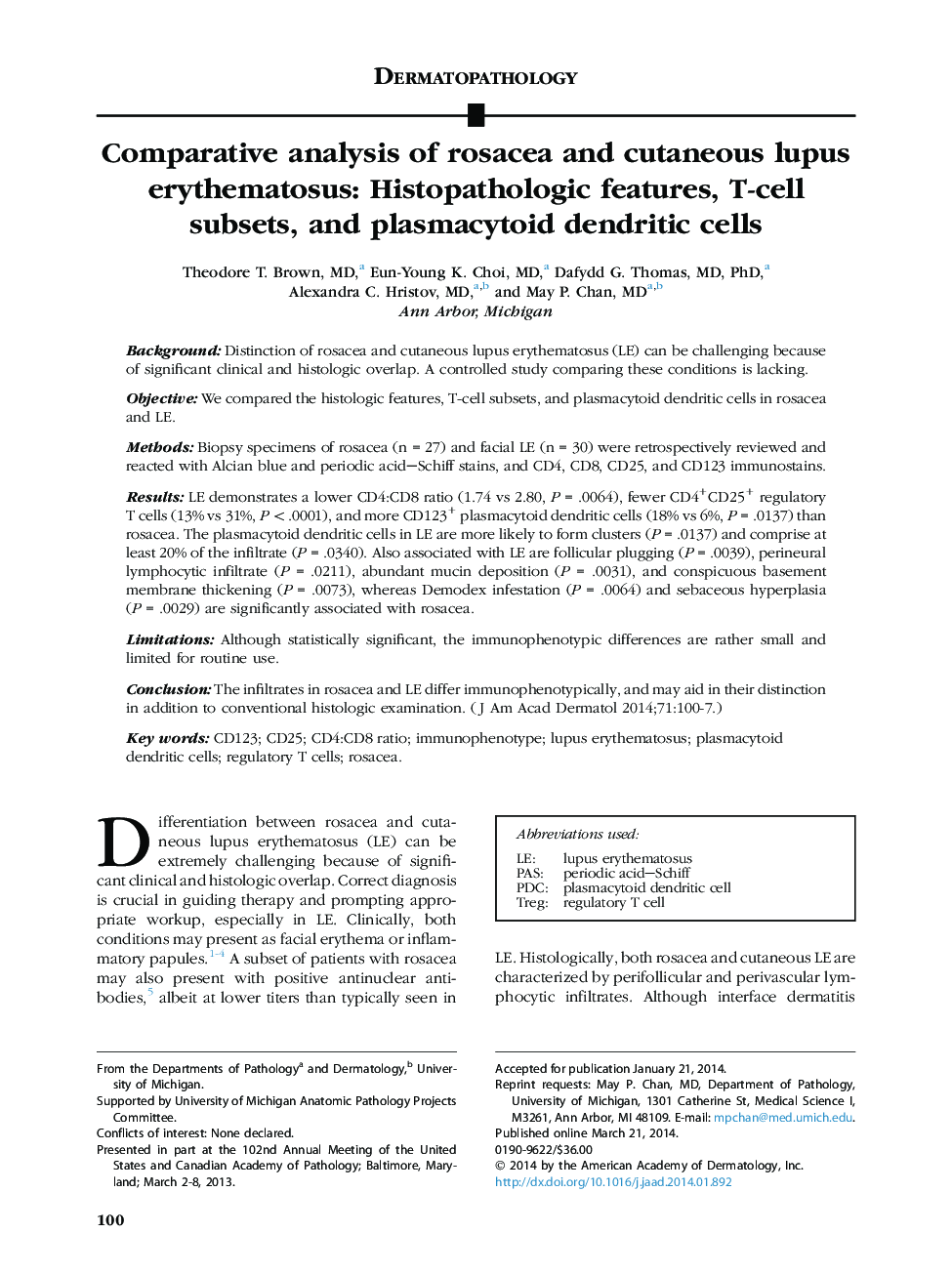| Article ID | Journal | Published Year | Pages | File Type |
|---|---|---|---|---|
| 6072027 | Journal of the American Academy of Dermatology | 2014 | 8 Pages |
BackgroundDistinction of rosacea and cutaneous lupus erythematosus (LE) can be challenging because of significant clinical and histologic overlap. A controlled study comparing these conditions is lacking.ObjectiveWe compared the histologic features, T-cell subsets, and plasmacytoid dendritic cells in rosacea and LE.MethodsBiopsy specimens of rosacea (n = 27) and facial LE (n = 30) were retrospectively reviewed and reacted with Alcian blue and periodic acid-Schiff stains, and CD4, CD8, CD25, and CD123 immunostains.ResultsLE demonstrates a lower CD4:CD8 ratio (1.74 vs 2.80, P = .0064), fewer CD4+CD25+ regulatory T cells (13% vs 31%, P < .0001), and more CD123+ plasmacytoid dendritic cells (18% vs 6%, P = .0137) than rosacea. The plasmacytoid dendritic cells in LE are more likely to form clusters (P = .0137) and comprise at least 20% of the infiltrate (P = .0340). Also associated with LE are follicular plugging (P = .0039), perineural lymphocytic infiltrate (P = .0211), abundant mucin deposition (P = .0031), and conspicuous basement membrane thickening (P = .0073), whereas Demodex infestation (P = .0064) and sebaceous hyperplasia (P = .0029) are significantly associated with rosacea.LimitationsAlthough statistically significant, the immunophenotypic differences are rather small and limited for routine use.ConclusionThe infiltrates in rosacea and LE differ immunophenotypically, and may aid in their distinction in addition to conventional histologic examination.
